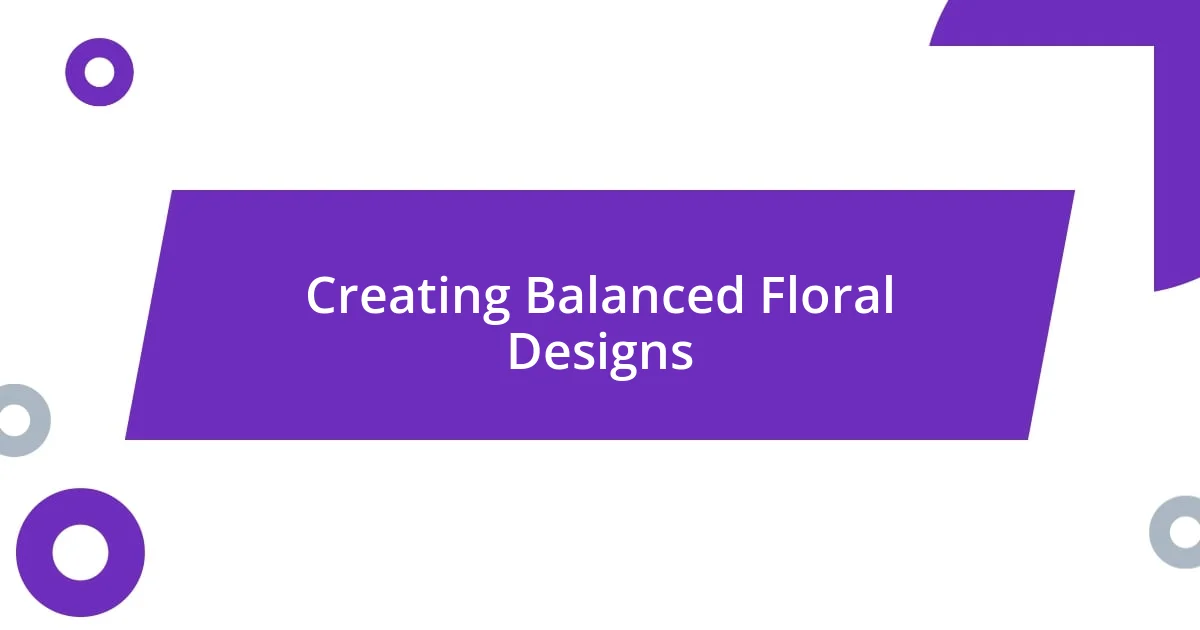Key takeaways:
- Flower composition books blend art and science, fostering creativity and deeper appreciation for nature’s beauty.
- Effective composition techniques include focusing on structure, experimenting with color, and incorporating personal emotions.
- Choosing the right flowers intentionally, based on context and colors, significantly enhances emotional expression in arrangements.

Introduction to Flower Composition Books
Flower composition books may seem like simple notebooks at first glance, but they hold immense value for both aspiring botanists and art enthusiasts alike. I remember my first encounter with one during a sun-soaked afternoon in a local botanical garden. As I flipped through the pages, I marveled at how each entry transformed vivid blooms into vivid memories, reminding me how connected we feel to nature’s beauty.
Delving into these books opens up a world of creativity and reflection. I often find myself pondering: how can the delicate petals of a flower inspire our artistic expressions? Each composition is a snapshot, a moment where observations meet imagination, blending scientific accuracy with a touch of personal flair. The joy of organizing these thoughts is akin to nurturing a garden—each idea planted and cultivated in its own colorful space.
With every sketch, note, or pressed petal, we create a narrative that not only deepens our understanding of flora but also expresses who we are in that moment. It’s a profound, almost poetic, experience. Have you ever considered how a simple flower could evoke such complex emotions? I certainly have, and I cherish the personal journeys I’ve embarked on within the pages of my own flower composition books.

Key Benefits of Flower Composition
Creating flower compositions offers unique benefits that extend well beyond mere observation. For me, it’s a delightful blend of art and science. When I take the time to sketch or write about a flower, I find myself developing a deeper appreciation for its structure, color variations, and the role it plays in its ecosystem. This hands-on interaction fosters a sense of mindfulness, allowing me to appreciate nature in ways I never would have considered otherwise.
Moreover, flower composition fosters creativity. Each pencil stroke or descriptive line becomes an opportunity to experiment with form and expression. I remember one afternoon after sketching a bouquet of daisies; I felt inspired to paint—and that spontaneous expression transformed into a gift for a dear friend. It’s a beautiful reminder that flower composition isn’t just about documenting; it’s about expressing emotions and ideas that flow from our very souls.
Additionally, these compositions help enhance observational skills. I’ve noticed how my attention to detail sharpens—no longer do I see just a flower; I see its layers, patterns, and the movement of light upon its petals. The last time I stepped into a garden, my eyes scanned the petals with a newfound curiosity. Have you ever looked closely enough to see all the intricate details? I invite you to indulge your senses the next time you encounter a bloom; the rewards are truly invaluable.
| Key Benefit | Description |
|---|---|
| Deeper Understanding | Developing a profound appreciation for floral structures and their ecosystems. |
| Creativity Enhancement | Expressing emotions and ideas through artistic sketches or writings. |
| Improved Observational Skills | Shifting focus to intricate details in flowers, enriching our experience with nature. |

Techniques for Effective Composition
Understanding techniques for effective composition in flower composition books is vital for bringing those vibrant blooms to life on the page. Personally, I’ve found that breaking down flowers into individual components—like their shape, color, and texture—allows me to appreciate them more deeply. For instance, one summer evening while sketching roses, I spent extra time observing how their petals unfurled and captured the golden light, enriching my artwork in ways I hadn’t anticipated.
Here are some techniques that have truly helped me in my composition journey:
- Focus on Structure: Spend time understanding the anatomy of the flower. Capture details like petal shape and leaf arrangement.
- Use Light and Shadow: Pay attention to how light interacts with the flower. Shadows can add depth and dimension to your sketches.
- Incorporate Personal Emotion: Think about what the flower evokes for you—fond memories, feelings of tranquility, or joy—and express that in your composition.
- Experiment with Color: Use a variety of colors to express your unique vision. Don’t shy away from mixing hues to create something original.
- Journaling: Alongside your sketches, write down thoughts or stories related to your experience with the flower. It can spark new creative ideas.
These techniques have transformed how I engage with my surroundings. There’s something magical about capturing nature’s beauty while inviting my emotions into the mix. I remember once doodling a vibrant sunflower and adding a few lines about how it reminded me of sunny childhood days spent in my grandmother’s garden. That simple act turned my composition into a cherished memory, highlighting the profound bond we create with the subjects we portray.

Choosing the Right Flowers
Choosing the right flowers for your compositions can feel overwhelming, but it’s such an essential part of the process. I’ll never forget the thrill of finally selecting the perfect peonies for my latest project—they embodied everything I wanted to express: grace, beauty, and a hint of nostalgia from my aunt’s garden. Have you ever stumbled upon a flower that mirrored your emotions perfectly? That’s the magic of choosing flowers with intention.
When I think about colors, I often recall a time I paired vibrant orange marigolds with delicate white lilies. The contrast was stunning, evoking warm summer evenings and a sense of spirited joy. It made me realize how color choice can pull viewers into a specific feeling. Each hue tells a story; I encourage you to think about what emotions the flowers you choose might invoke in others.
Don’t forget about the season and context. I once attempted a winter-themed composition using artificially bright tulips, and it just felt out of place. The ambiance of your surroundings can greatly influence your flower choices. What do the flowers signify at that moment? My advice is to draw inspiration from your environment; you’ll be surprised at how the right local flowers can create a deeper connection to the season and setting you are working within.

Color Theory in Flower Arranging
Color theory plays a pivotal role in flower arranging, giving us the language to express emotions through our compositions. I vividly remember the first time I mixed complementary colors, like deep purple and bright yellow, in an arrangement. The immediate reaction from friends was inspiring; the colors seemed to dance together, creating an almost electric vibe that lifted everyone’s spirits. Have you ever noticed how certain color pairs can completely elevate the mood in a room?
When I explore color schemes, I often reflect on warm and cool tones, which add different feelings to any arrangement. For instance, while experimenting with a soft lavender and pale green palette for a friend’s wedding, I aimed for a serene atmosphere. The delicate harmony felt so right; it whispered elegance and tranquility. It was rewarding to see how those colors resonated with guests, invoking a sense of peace and joy in the celebration.
I’ve also discovered the power of monochromatic arrangements while working with a deep red theme for an intimate dinner party. Each shade of red—be it claret or blush—added depth and visual interest while still creating a unified look. That evening resonated deeply with everyone, as the color became a focal point for connection and shared understanding. Doesn’t it amaze you how a simple choice of color can evoke such varied emotions and experiences?

Creating Balanced Floral Designs
Creating balanced floral designs is all about harmony and proportion, and I’ve learned a great deal through hands-on experience. Once, while experimenting with an asymmetrical arrangement, I found that placing the larger blooms off-center created a sense of movement. It was exciting to see how shifting just a few flowers transformed the design from chaotic to captivating. Have you ever noticed how balance can change the mood of a composition?
I always pay attention to the weight of various elements in my arrangements. During a workshop, I remember using heavy, textured foliage to support lighter flowers like daisies. This not only provided stability but also made those delicate blooms pop, guiding the eye through the entire piece. It’s incredible to think about how visual weight, much like in art, can either ground or lift a floral design. What have you observed about the interplay of different textures in your own creations?
Finally, I can’t emphasize enough the importance of empty space, or negative space, in achieving a balanced design. I once created a minimalist centerpiece where the flowers were intentionally spaced apart, allowing for breathability. This decision drew attention to each flower, making the arrangement feel airy and intentional. I often find myself asking: how can the spaces between flowers tell their own story? The answer lies in thoughtful placement, which can enhance the overall impact of the design.














